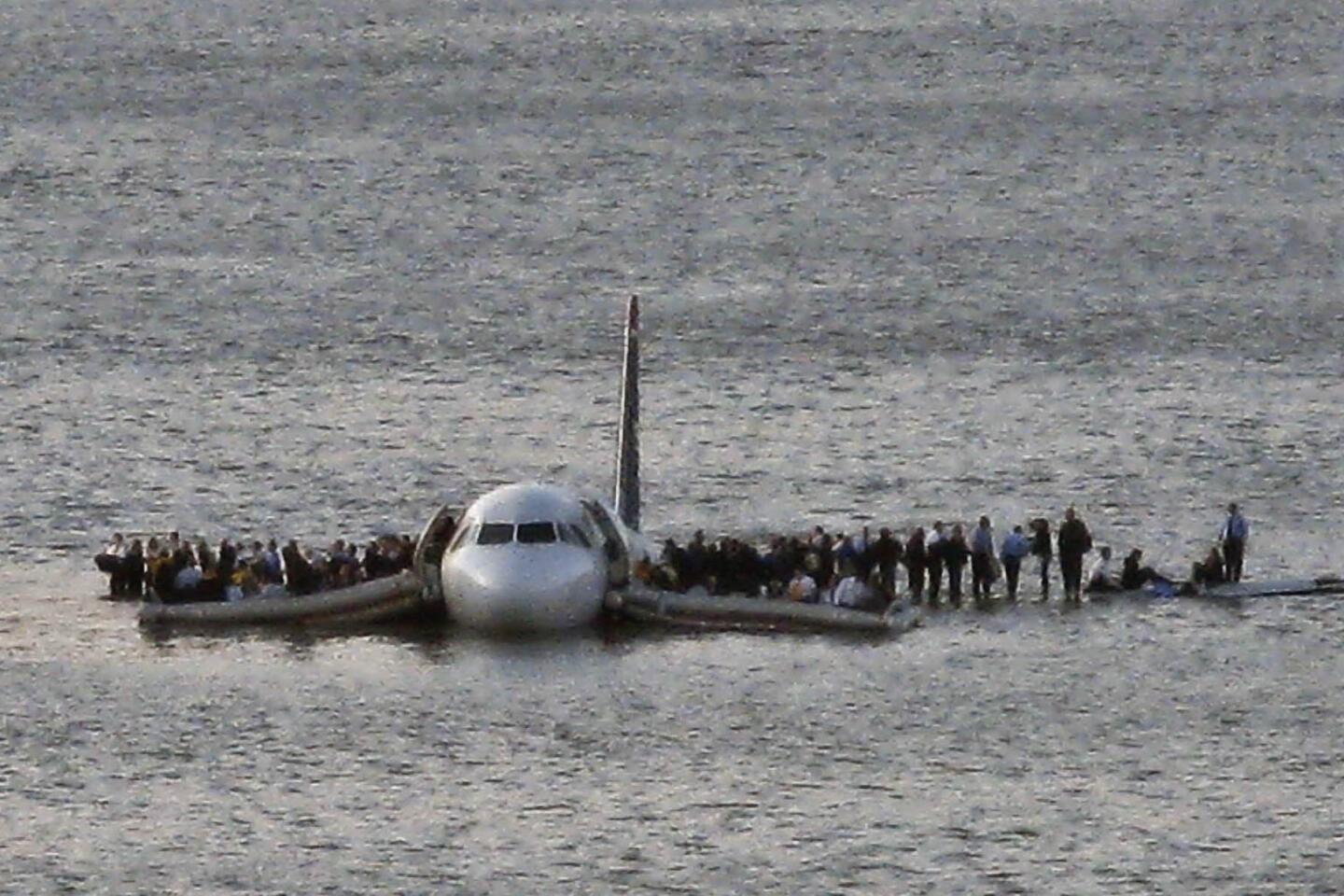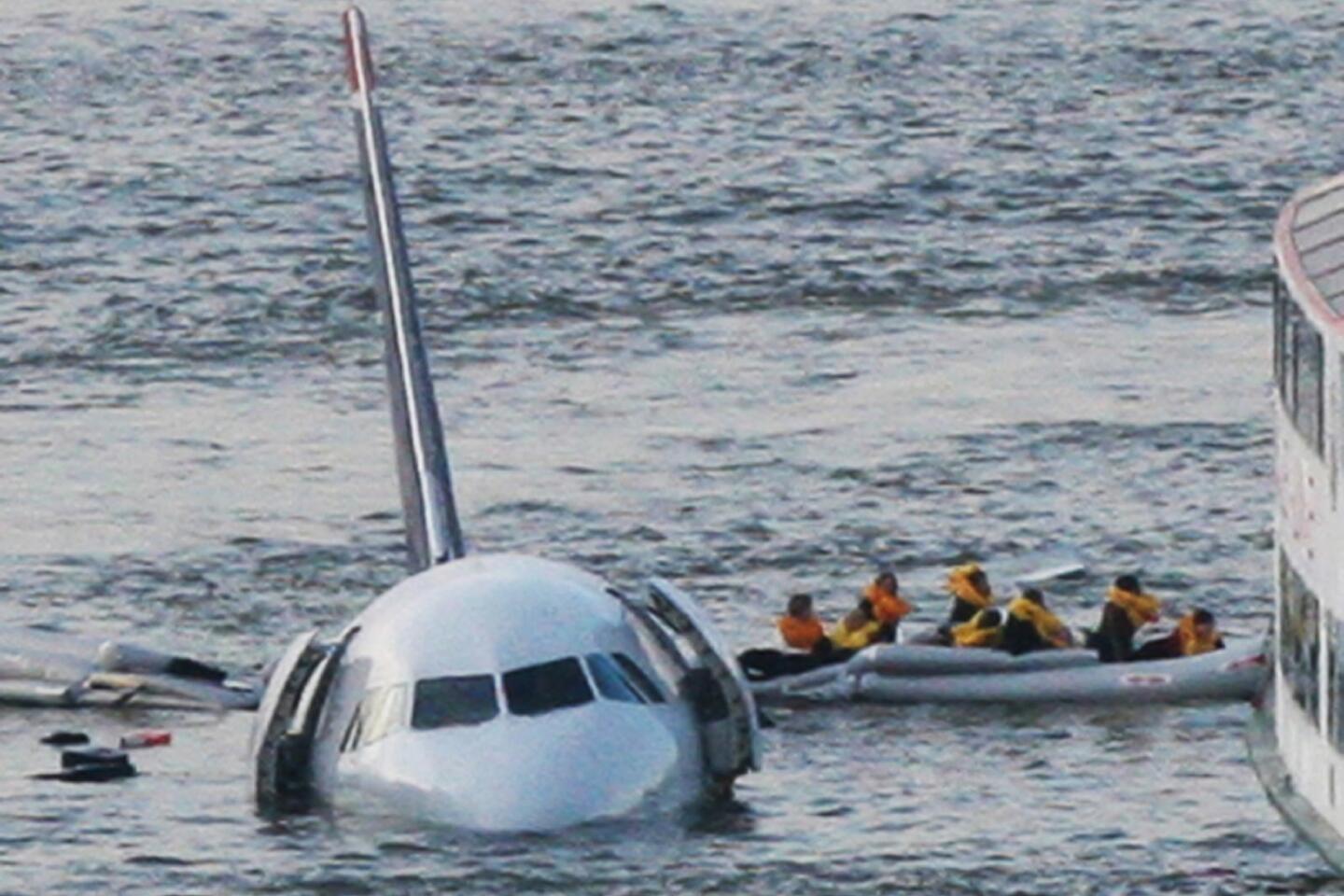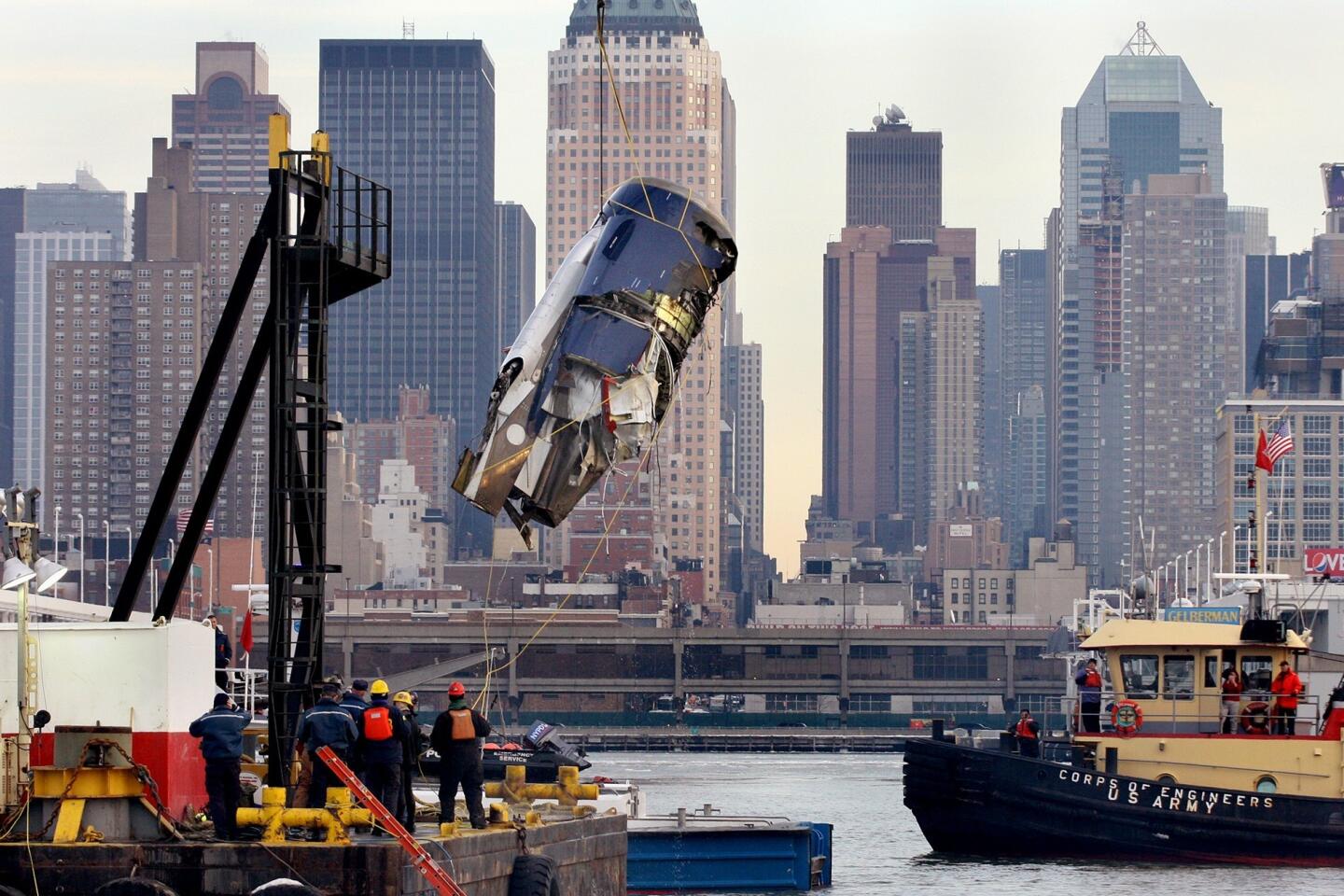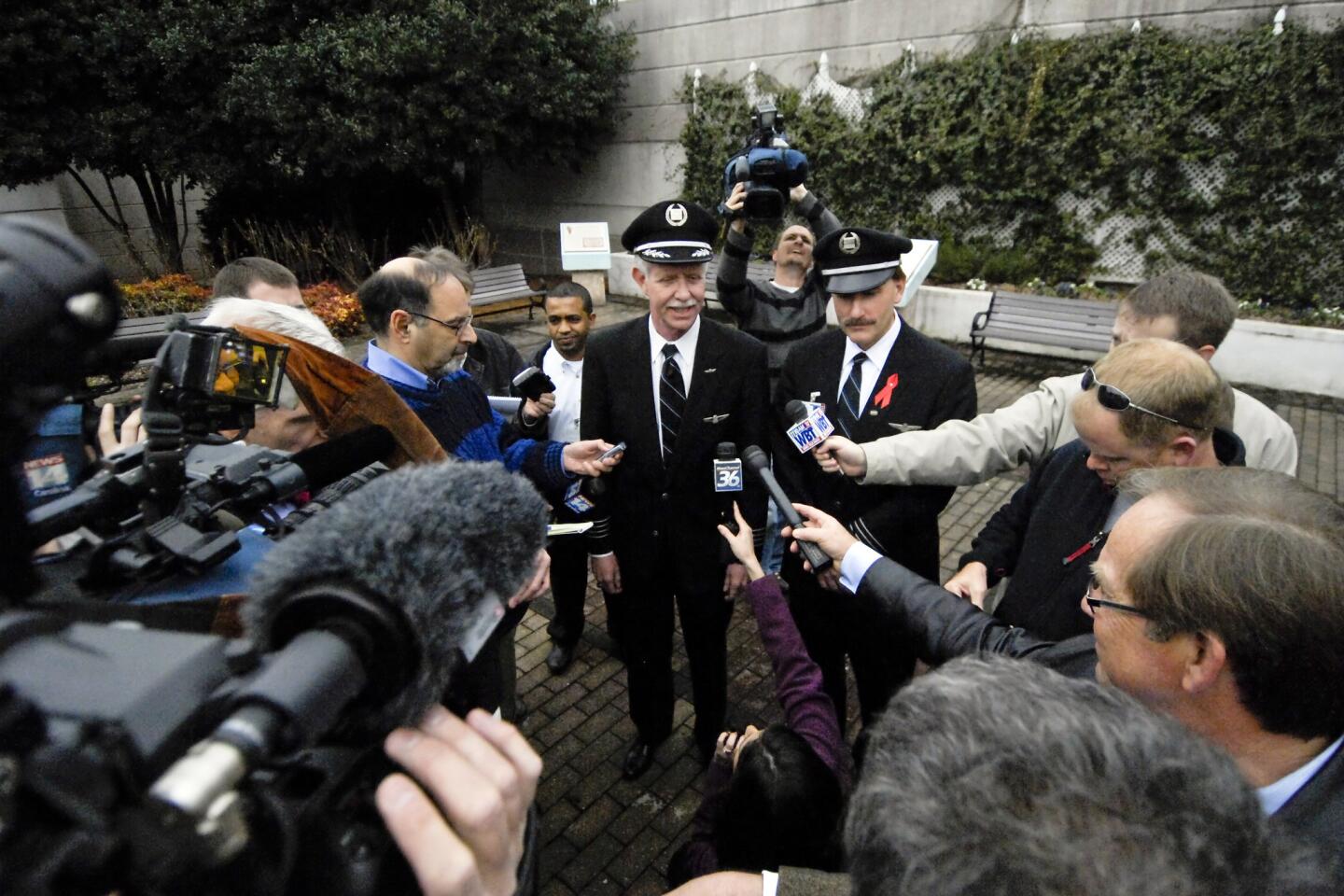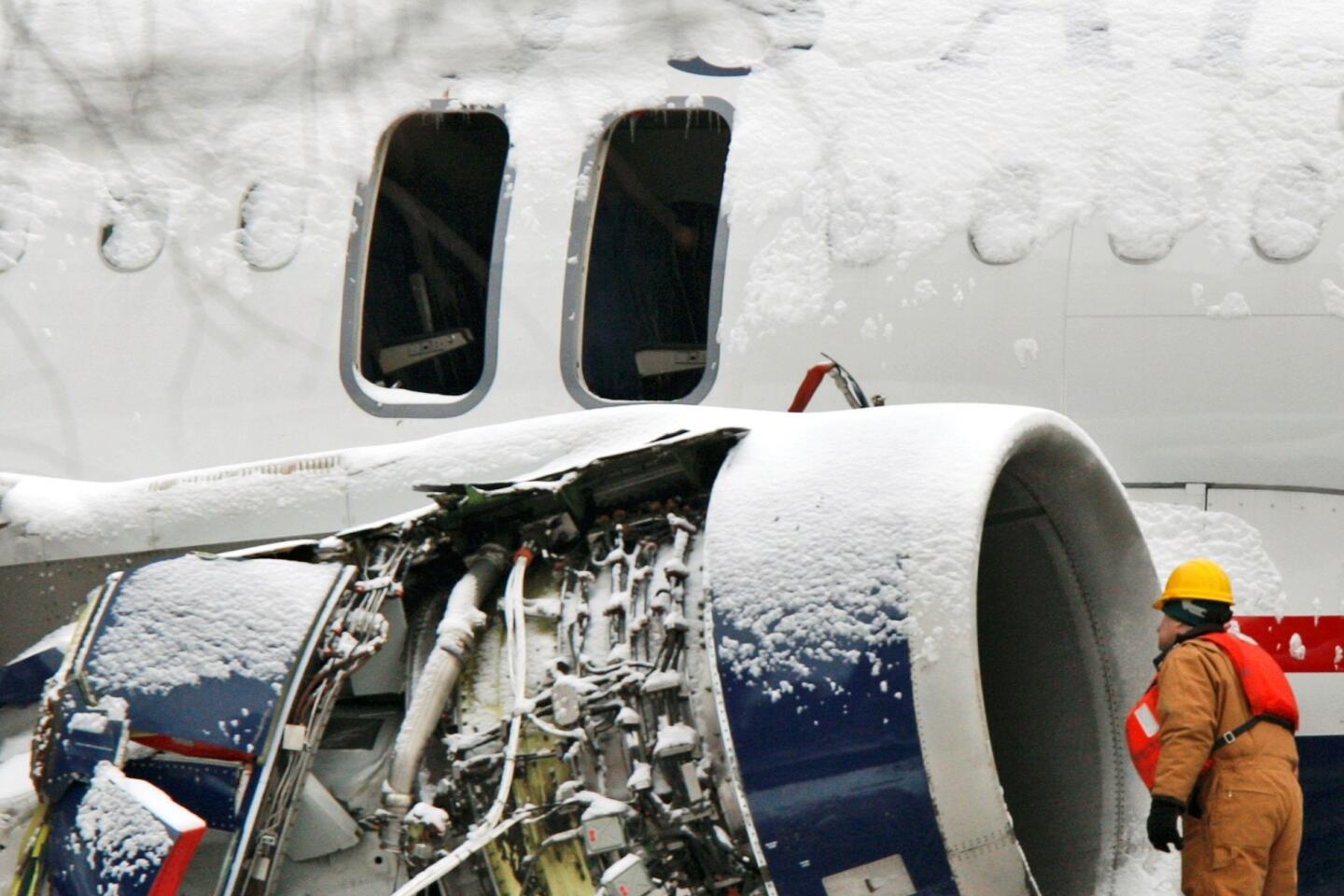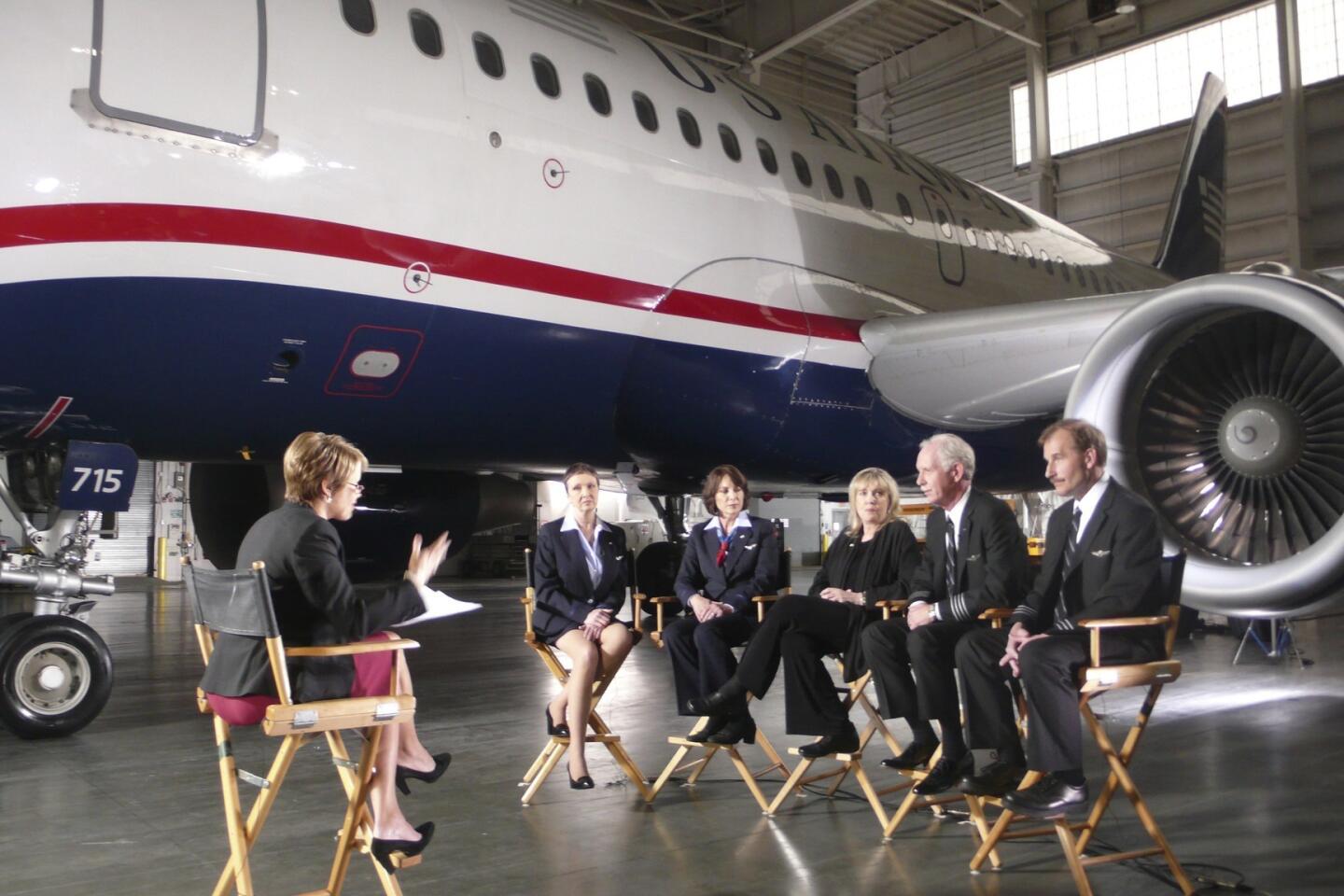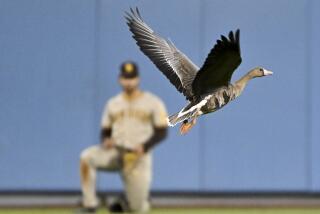Five years later, the Miracle on the Hudson still awes aviation
- Share via
Just minutes after US Airways Flight 1549 left LaGuardia Airport in Queens five years ago, a flock of geese invaded the craft’s engines, forcing the plane into a watery emergency landing that became known as the Miracle on the Hudson and helped define a modern version of heroism.
The scene of passengers standing on the wings of the airplane, floating in the cold waters of the Hudson River, waiting for rescue, became the image of a miracle and turned the crew, and especially Capt. Chesley Sullenberger III, into heroes. The water landing, the survival of all parties and Sullenberger’s modesty all conspired to make the man known as “Sully” a household name.
“We were all of a sudden confronted with an ultimate challenge of a lifetime -- one we never trained for,” Sullenberger said Wednesday on “CBS This Morning.” He, other crew members, passengers and rescuers were to participate in a ceremony in New York to commemorate the events of Jan. 15, 2009.
The plane’s plight unfolded on live television as the nation watched the emergency with growing dread -- an event that ended with a sigh of relief heard around the world.
Bird strikes are common coming out of the New York metropolitan area’s airports, but this one was especially hazardous, Both engines were failing and the plane went into a glide, putting the lives of the 155 passengers and crew members completely in the hands of Sullenberger and his co-pilot, Jeffrey Skiles.
The pair had more than 50 years of experience, but this was the type of crisis for which nobody could possibly train. A watery landing was the only choice.
“I chose the least bad option, but I was happy to have it,” said Sullenberger of the approaching Hudson River. “In this area, since we couldn’t glide as far as a runway, it was the only other place to go that could be made a runway.”
The plane came down safely and television caught the images of people crowding onto the wings, waiting for rescue, a testament to the cabin crew who got people out safe.
Within four minutes of landing, commuter ferry boats arrived in force, along with the Coast Guard and police, bringing the passengers to safety --- and adulation from a grateful city.
Sullenberger said the incident was life-changing. Since the crash, he has fought for better flight safety.
“It was one of those events, in the first couple of seconds, I knew it was going to be unlike anything I had ever experienced,” he said in the television interview.
“It was going to define my life into before and after,” he said. “I knew it was going to be a challenge of a lifetime that was mine to solve, but it also provided opportunities, like this one, to have a greater voice about things.”
ALSO:
Oklahoma same-sex marriage ban struck down by federal judge
Navy to move Ronald Reagan aircraft carrier to Japan next year
Roswell school shooting suspect, 12, may have warned of attack online
More to Read
Sign up for Essential California
The most important California stories and recommendations in your inbox every morning.
You may occasionally receive promotional content from the Los Angeles Times.
